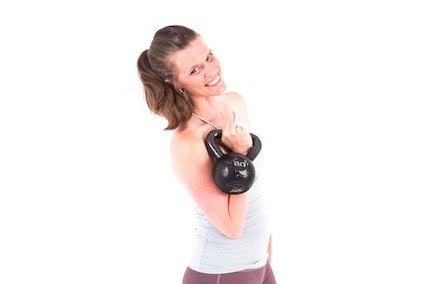So you’ve decided on going the kettlebell route for your home gym, and you’re ready to invest in a set of weights that will be appropriate for your strength needs and budget.
But type “kettlebells” into Google and you’ll get a lot of options that you might not have expected.
In this short video, I explain the differences in a few popular types of kettlebells on the market today. Here are the general distinctions to keep in mind as you shop:
Coating
Kettlebells come in different finishes, which offer different kinds of support and feedback. There’s a slick finish, which is a bit more padded. Powder coated bells offer more friction, which means they won’t slip in your hands as easily if they get sweaty. A rubber coating can create a softer barrier against the floor, which you might consider if you’re working out at home, but can also scuff floors. (A solution is to get a training mat—Rogue and Kettlebell King both have great options.)
Size
There are two sizes of kettlebells: competition size and regular size.
As the name implies, competition size bells are used for competitions, which means they have the same volume (i.e., dimensions) for each weight (all the 20 pounders are the same, 30 pounders, etc.). The circumference of the bell and size of the handle are standardized, which means you will quickly adjust to the grip you need to hold the bell, how it sits against the body, and how it moves through the air even if you go to use someone else’s bell. They tend to be larger in size, which off-sets the weight away from your body when doing a move like an overhead press. This might make it seem harder to lift at first, compared to a more compact, regular bell. These bells are often more expensive, too, which you should keep in mind if you’re investing in multiple weights.

Regular size bells aren’t uniform, meaning their volume and handle size will differ among brands.
Depending on your body, these factors may cause discomfort or pressure as you hold the bell in different positions. I often find students complain of irritation or pain at the wrist/lower forearm area when using regular size bells in the rack position, since their compact structure won’t distribute the weight as evenly as a competition size bell would. You can always buy Kettleguard wrist guards to support that.

More questions? Email me! I also offer private sessions if working one-on-one would be useful to your practice.


Leave a Reply